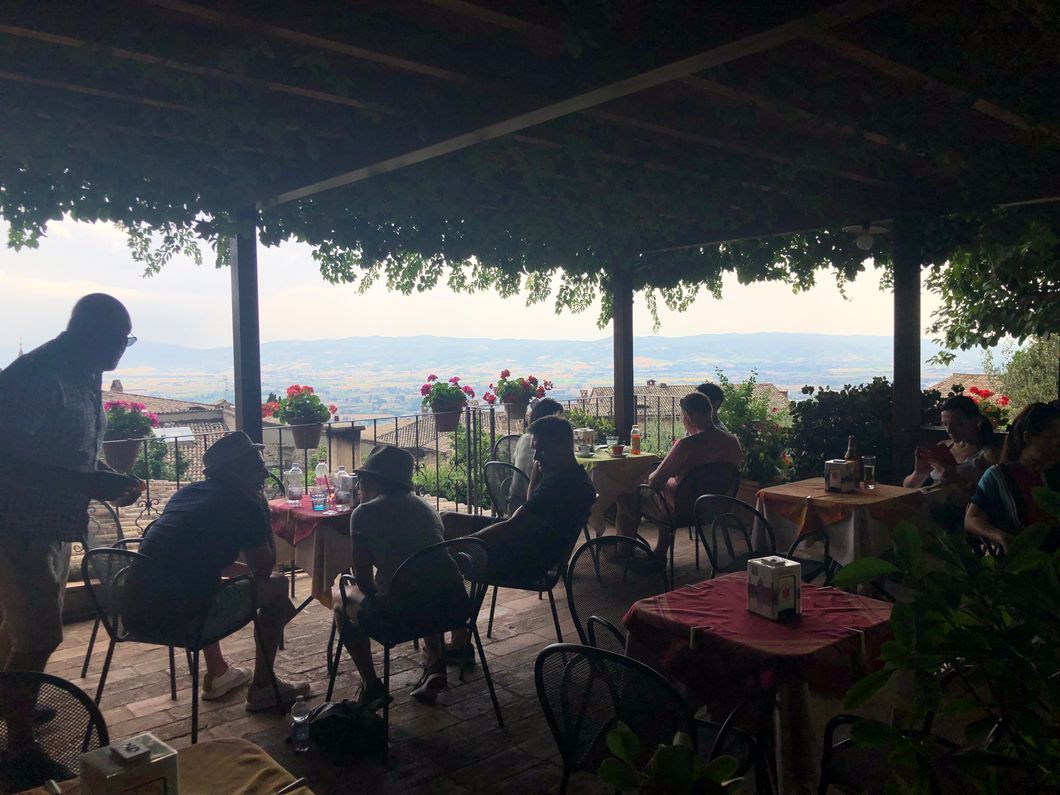One of the worst parts of this quarantine has been the inability to go out to eat. As someone with a food blog, I covet the opportunities to explore all different kinds of cuisine in all parts of the country, but obviously, I haven't been able to do so the past couple of months. However, with parts of the nation beginning to reopen, including my town, I have seen many restaurants employing a kind of al fresco dining, meaning that all the tables are outside.
On a walk, I was first delighted to see my town back to life again, hearing the ding of glassware and conversation mingle with the delicious smells of the kitchens. However, this was soon replaced with unease, as I eyed the closely packed tables and mask-free customers.
It made me wonder — is this going to make everything so much worse?
Of course, outdoor dining is a great solution to the problems that many restaurants have faced during the lockdown, and it also provides a place for people to join together once more and celebrate over good food and drinks. However, if not done properly, it presents even greater problems.
One of the biggest issues that masks help discourage is the dispersion of saliva and air while we talk, which is a large factor in the transmission of the coronavirus (COVID-19). However, I did not observe a single customer wearing a mask, even while they were just waiting for their food. Obviously, no one is going to sit in silence for the 30 minutes that it takes to prepare their meal, so while the customers talk amongst themselves in a well-meaning conversation, COVID-19 will have a much better chance at finding a new host.
Another huge issue is the spacing of the tables. Especially in towns and cities, most small, local restaurants do not possess the square footage outside to seat the same amount of customers as they might inside. To make up for it, I've witnessed many restaurants cramming together the tables in an almost comical fashion. What isn't funny, though, is how it puts all customers in closer proximity to the neighboring table, further putting them at risk since social distancing guidelines are no longer being followed.
Aside from these issues, many people would argue that the threats of eating out stop there since there is no proof that we can contract the virus through the ingestion of food. However, the virus has been proven to linger on surfaces, meaning that you are placing all of your trust on the people who are washing your silverware, dishes, and glassware. Even if they are properly cleaned, the steps going from the drying rack, to the kitchen, to the server, and finally to your table, meaning that it is being touched by a minimum of three people before it finally reaches you.
Although gloves are required, how can you be positive of what goes on behind closed doors?
Finally, even small actions like holding the menu, signing the check, or paying with a card are all instances where you are increasing your chance at exposure to the virus. Believe me, I don't want to scare you. I think it is important to still enjoy ourselves as well as support local businesses; however, you have to ask yourself, is it truly worth the risk?
























